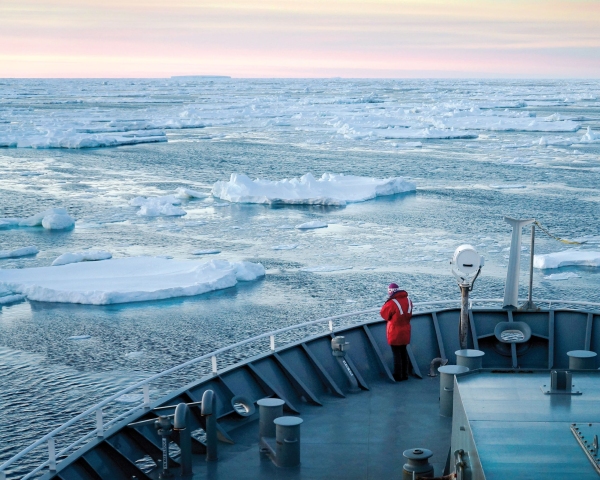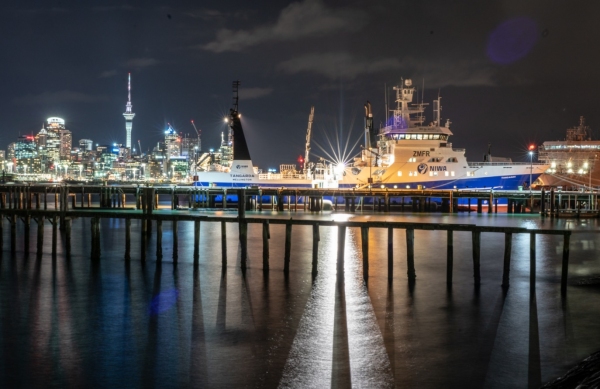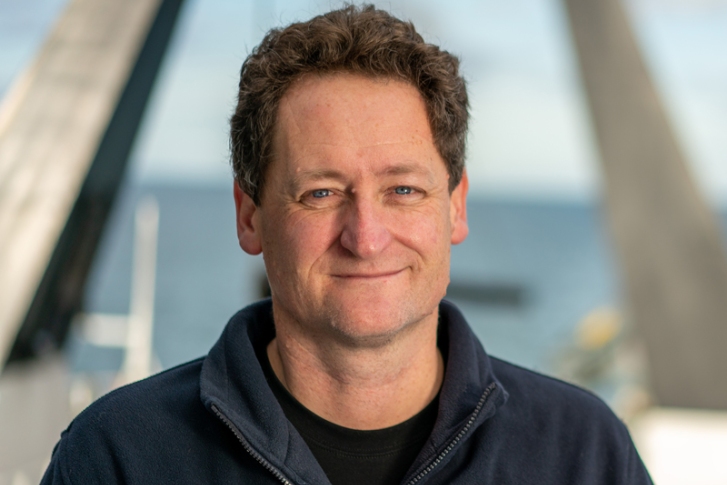A group of intrepid scientists leaves Wellington for Antarctica this week on board NIWA’s research vessel Tangaroa for what their leader calls “a voyage of discovery”.
The 21 scientists, supported by 19 crew members, will be studying ocean, atmosphere and ecosystem processes in the Southern Ocean with the focus on establishing monitoring programmes for the newly created Ross Sea Marine Protected Area (MPA). Scientists from China, Italy and France are also on board.
At over 1.55 million km2 in size, the MPA is the world’s largest and just a year old. It comprises a range of zones from fully protected to special research zones, as well as areas left open to fishing.
Voyage leader Dr Richard O’Driscoll says the main aim of the trip is to increase knowledge about key processes in the Ross Sea and to provide baseline information about the MPA so scientists can start to evaluate its effectiveness.
“During the voyage we will be making a range of observations from the atmosphere and water column. We will also undertake some biological sampling of small fish and fish living close to the seabed that are potentially impacted by the toothfish fishery,” Dr O’Driscoll says.
“It’s not about trying to predict a response but knowing how many are there so we can continue to monitor them over time.”
Seven moorings will be retrieved and redeployed. The moorings have scientific instruments attached to them and were originally dropped overboard during a similar voyage a year ago. The instruments will be brought back to Wellington to see what they have recorded during their year in the ocean.
Three moorings carry oceanographic instruments to better understand the outflow of cold, deep Antarctic water important for ocean circulation from Cape Adare.
Whale listening posts
Three others are whale listening posts spread over a wide area to record whale vocalisations. “Everyone is very excited to see what the acoustic listening posts will have picked up” Dr Matt Pinkerton says. “The Ross Sea continental slope was probably a hotspot for sperm whales at one time, but they are rarely seen there now. The acoustic data will tell us if sperm whales are still visiting the Ross Sea”.
There is also an echosounder mooring that will look at the seasonal cycle of krill and small fish - the main prey for the Adelie penguins that live at Cape Adare. The redeployed moorings will stay in place for the next two years.
NIWA principal scientist Dr Matt Pinkerton is leading the complex Ross Sea Research and Monitoring Programme, known as Ross-RAMP, which is tracking change and evaluating the conservation values of the MPA. This project also supported recent fieldwork on Weddell seals near Scott Base led by Dr Kim Goetz.
It is the first programme in the world to bring together information from satellite, earth-system models, fishing vessels, Antarctic field stations and research voyages like this one, to assess conservation value of the MPA.
Dr Pinkerton says the proposed research to set up a monitoring programme for the MPA involves complex, innovative science to address crucial knowledge gaps.
“We believe that only by creating such an ambitiously multidisciplinary project can we disentangle the effects of human exploitation from environmental variability.”
Ross-RAMP is laying the foundation for research on the cumulative effects of climate change and fishing that will be internationally significant. “The project will provide New Zealand with a world-leading and cost-effective approach for assessing environmental and ecosystem change over the next 35 years,” Dr Pinkerton says.
The challenge of sea ice
Meanwhile, Dr O’Driscoll says the biggest challenge of any voyage to Antarctica is the conditions.
“Any seagoing voyage has the weather to deal with and you’re never going to be able to work every day. But this one also has the challenge of sea ice and we have been keeping an eye on the ice predictions to try and work out where to go first.”
Dr O’Driscoll last led an Antarctic voyage in 2015 where sea ice prevented Tangaroa from accessing several areas, but last year’s Antarctic voyage was almost devoid of sea ice.
“The ice can change daily with the winds and currents and can have a huge impact on what you do. This year we have undertaken some preliminary ice analysis and will also receive daily weather forecasts and satellite images to help us determine the order of our research.”
With eight science objectives to carry out, plus other work for international organisations, Dr O’Driscoll says the multi-disciplinary nature of the voyage will mean a lot going on.
“Everyone thinks their objective is the number one priority so as voyage leader I have to manage expectations and come up with a plan that keeps everyone happy. If we come back with everybody on board happy with what they’ve achieved, from my point of view that’s a successful trip.”
Logistics
The logistics involved in an Antarctic voyage are enormous. Permits, biosecurity checks and other approvals must be sought and then there are the safety considerations for everyone on board.
Two survival containers have been installed on the ship containing rations, clothing and tents and all passengers must undertake survival training. Heating, ice matting and emergency generators have also been added.
“There is a lot of risk analysis to try and minimise the risk associated with going into such a hostile environment. We are going to places we have never gone before and putting cameras down onto areas of the seabed where no one has looked before. It really feels like a voyage of discovery. The Ross Sea still has large areas which are unknown,” Dr O’Driscoll says.
The voyage is jointly funded by the Ministry of Business, Innovation and Employment through the Ross-RAMP programme, NIWA, and the University of Auckland.
Tangaroa leaves Wellington on Tuesday, January 8, for its 13th voyage to Antarctica. It will return in mid-February.
Voyage updates
See the latest voyage updates and track the RV Tangaroa's movements.




